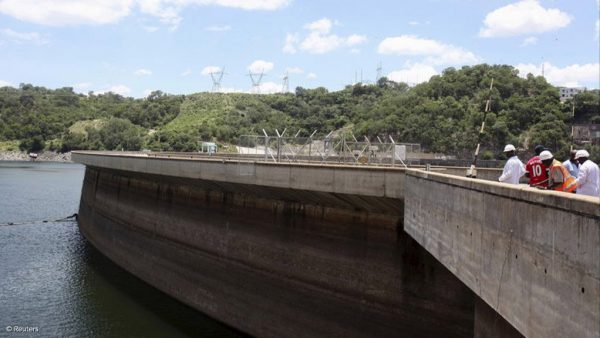KARIBA Dam is left with only 1,23 metres or 8,50% of water usable for power generation known as live water before reaching the stipulated minimum threshold after it further dropped by 13 centimetres this week to 476,73 metres above sea level, according to official data obtained from the Zambezi River Authority which manages the dam.
This comes after inflows from the Zambezi River that feeds the Kariba Dam, which is one of the world’s largest reservoirs that used to provide reliable electricity to Zimbabwe and Zambia, further dwindled.
Kariba Hydroelectric Power Station is designed to operate between the water levels of 475,50 metres and 488,50 metres in order to generate power.
But, water levels have significantly dropped. The situation will likely exacerbate, experts, warned Thursday.
Business Times can report that a year ago, water levels at the dam was 482,59, which represented 51,50% of capacity.
The depletion of Kariba’s waters is very troubling because if water in the Kariba Dam depletes to below the stipulated minimum threshold of 475,50 metres, it may only be used for recreation and fishing purposes because low water cause mechanical problems as it cannot turn turbines to generate electricity.
“The lake level continued receding, dropping by 13 cm during the week under review, before closing at 476,73 metres. Last year on the same date, the lake level was 482,59 metres,” ZRA said Thursday.
The rapidly declining water at Kariba Dam presents the real risk that electricity consumers could be subjected to deeper power cuts in the country. Currently, the power utility ZESA is unleashing daily power cuts lasting more than 18 hours daily, something which continues to hurt the economic revival efforts.
If the situation continues like this, the Kariba South Hydroelectric Power Plant, which is Zimbabwe’s largest electricity source with a capacity of 1 050 megawatts (MW), will be decommissioned soon. Continuing to drain water by generating power poses the risk of depleting the reservoir and jeopardizing chances of getting power from it next year as it may not be able to build sufficient stocks to support significant power output until April next year when Zambezi River’s flow starts peaking strongly.
This is because 80% of water flows into Zambezi is from Angola, DRC and Zambia, among other catchments in the north of the flood plains. The remaining 20% is from Zimbabwe, which has only two rivers which supplies water into Kariba namely Sanyati and Gwaai rivers.
Water from the north passes through the barotse plains or wetlands, which suck huge amounts of water first and eventually release into the Zambezi River when saturated at the peak of the rainy season around February and March.
Usually, a strong flow of the mighty Zambezi River is noticed in Victoria Falls, which is about 120 kilometres upstream, in around March or April of each year, meaning that Kariba Dam receives its optimum inflows around May, with the dam’s water levels reaching optimum levels around June.
Kariba South Hydroelectric Power Plant is generating less than 200MW due to low water levels caused by a severe drought.
Zimbabwe, last year, commissioned an additional 300MW at Kariba, its biggest investment in electricity in more than 25 years_Business Times
.png)




